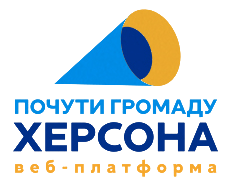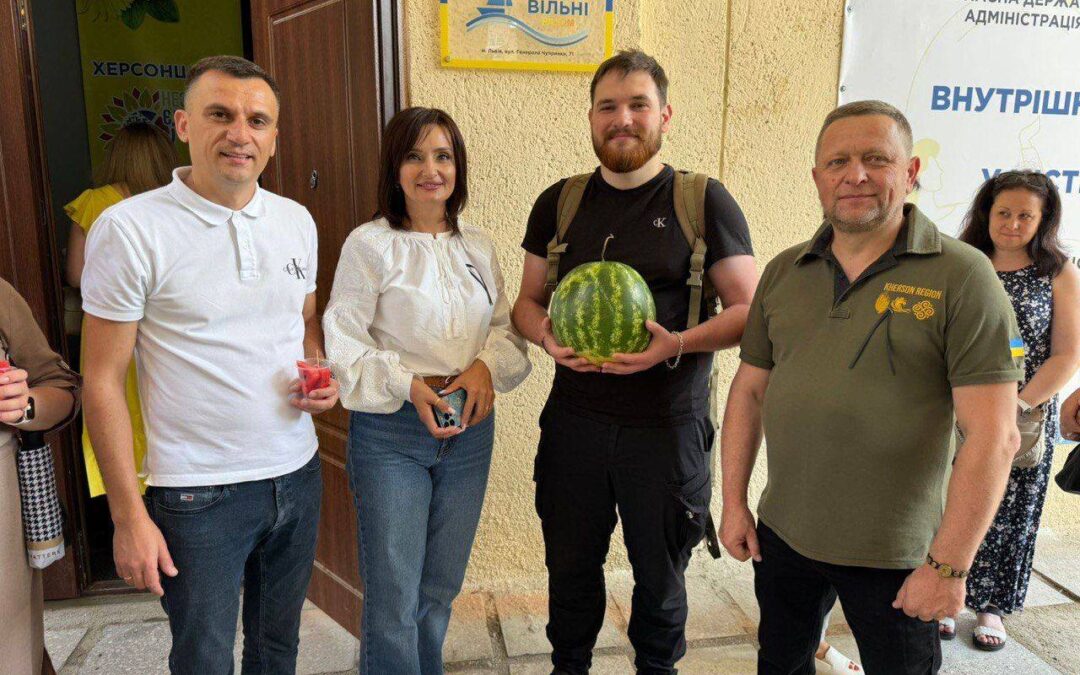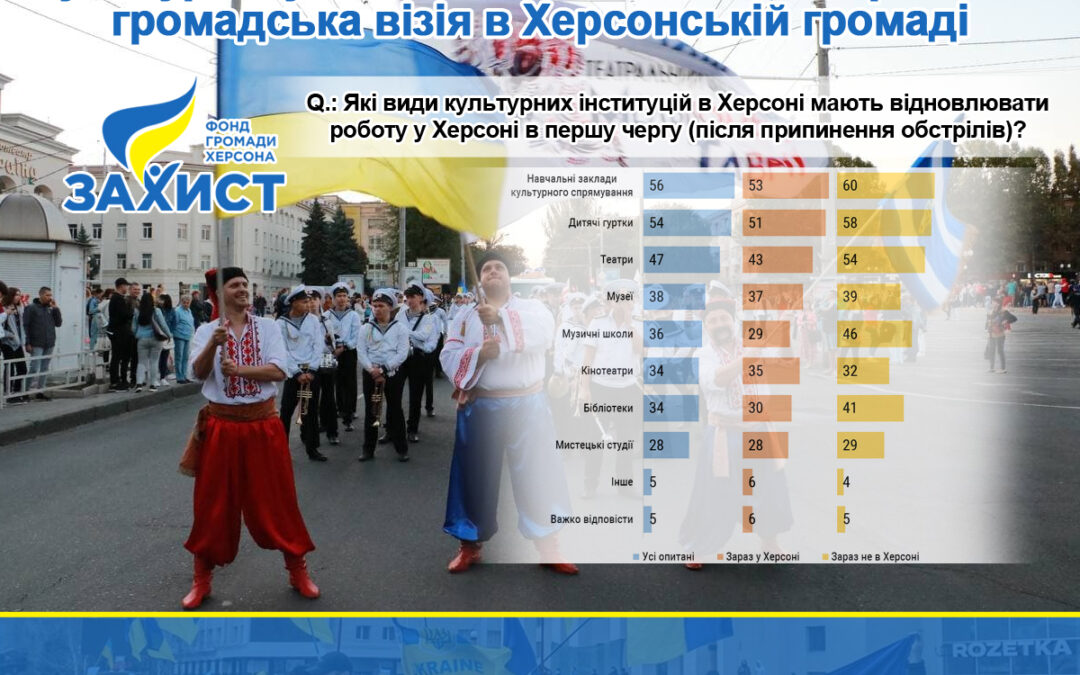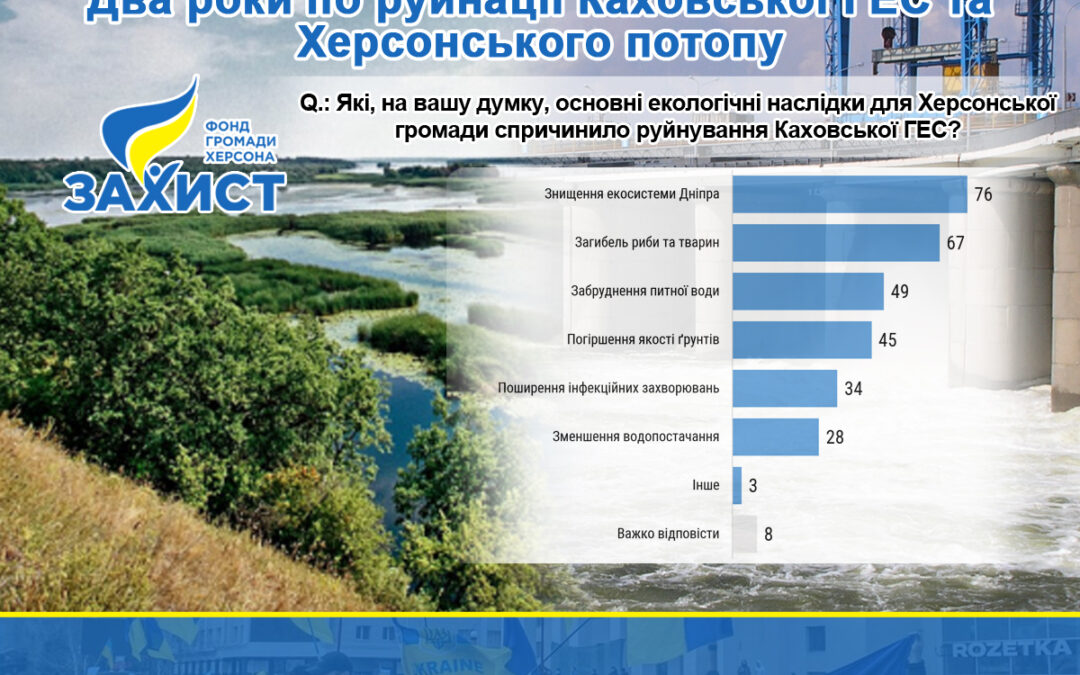Methodology: An online survey using an interactive structured questionnaire; links to the survey were sent to potential respondents from the database (online research panel of the Kherson community). The sample was based on demographic indicators as of January 1, 2022. Given the indicators, the research margin of error does not exceed 5%, with a probability of 0.95. The sample included Kherson residents both currently residing within the community and those who left Kherson after February 24, 2022, to other regions of Ukraine or abroad. Currently, there is no official data on the
migration of Kherson’s residents, thus making it impossible to assess the given respondent sample’s representativity. However, there are reasons to believe that the ratio of those reporting themselves still residing within the community presented is greater than the actual ratio, which may affect the research results.
Research objective: find out the self-esteem, identity, and values held by Kherson’s residents.
Sample scope: 400 respondents.
Field stage period: August 20 – September 10, 2024.
Research client: Community Foundation of Kherson “Zakhyst.”
Research prepared by:
– Mykola Homaniuk (Kherson regional branch of the Sociological Association of Ukraine, Chairman),
– Oleh Sinaiuk (New Image Marketing Group LLC, Director),
– Ihor Danylenko (New Image Marketing Group LLC, analyst),
– Roman Rudenko (Kherson Regional Branch of the Sociological Association of Ukraine, analyst).
Key Findings
1.For approximately half (46%) of Kherson residents, their primary identity is as a local (‘Kherson’) from among the given set of regional-political-ethnic identities. For the other half (45%), their main identity is as a ‘Ukrainian,’ either being an ethnic Ukrainian by nationality (30%) or politically Ukrainian by citizenship (15%). These identities (local and national) are not in competition with one another but on the contrary complementary, as Kherson residents are about equally proud to be Kherson residents (89%) as to be citizens of Ukraine (87%). Additionally, for the majority of respondents, Kherson is now associated with the already-historic events of 2022.
2.Only 22% of respondents stated that they are happy (20% – rather happy, 2% – very happy). Most respondents stated that they were unhappy (59%) or did not answer the question (19%).
3.Kherson residents assessed their health to be quite poor. Only 14% stated that their health is very good (1%) or good (13%). 56% placed their health status at average. 24% of respondents said they have poor health, and 5% reported
having very poor health.
4.More than half of Kherson residents follow news about military operations. Half of the respondents check news from the front several times each day (50%), and 26% tune in every hour. The percentage of those who check the news less often than daily is 9%.
5.Less attention has been being paid to other news sources by the respondents. 9% check news every hour, 29% several times each day, and 26% once or twice each day. 29% of respondents answered tuning in either less often or never
(7%).
6.The next question was about Kherson residents Overall, respondents (74%) rated it with an average or high level. The
middle option (5/10 points) was the most popular answer, chosen by 23% of respondents.
7.However, the respondents showed a more negative attitude toward corruption in Ukraine. 39% rated it at the highest level (10/10 points). 7, 8, and 9 points were chosen by 10%, 16%, and 14%, respectively. Only 7% believe corruption to be low (below 5 points).
8.Most respondents prefer step-by-step and balanced reforms of Ukrainian society (59%). A radical path of change is acceptable to 24% of respondents. 17% believe that priority should be given to protecting society from any threats.
9.The next question was framed similarly to the previous one but related specifically to the vision of Kherson’s restoration. Even more respondents answered as believing it should be balanced and transparent (74%), while 22% think Kherson should undergo fundamental changes in the future.
10.Respondents mainly claimed to be Kherson residents when answering the question about self-identification (46%). 30% identify themselves primarily as Ukrainians by nationality, and then 15% as Ukrainians by citizenship. Having compared this with the answers to the question of respondents’ secondary self-identification, we found an even distribution (22–23%) between identifying as a Kherson resident, a Ukrainian by nationality, or a Ukrainian by citizenship. Overall, regional identity was shown to be marginally prevailing over national identity among Kherson residents.
11.The preliminary conclusion allows us to cautiously state that the respondents are a bit more proud of being Kherson residents (61% very proud and 28% rather proud ) than being Ukrainians (53% very proud and 34% rather proud ). That said, pride in belonging to both regional and national communities has prevailed 89% and 87%, respectively.
12.The respondents feel their involvement in the future development of Ukraine and Kherson equally. 20% and 21% feel very involved and 54% and 56% feel rather involved in the future of Ukraine and Kherson, respectively. It should be
noted that among those not currently residing in Kherson, the share of those feeling very involved in the future of Ukraine is a bit higher 24%, ascompared to 17% of Kherson residents.

You can read the full report by downloading it or read it in Ukrainian.
This research was conducted by the Zakhyst Kherson Community Foundation Charitable Organization as a part of its project implemented under the USAID/ENGAGE activity, which is funded by the United States Agency for International Development (USAID) and implemented by Pact. The consents of this research are the sole responsibility of Pact and its implementing partners and do not necessary reflect the views of USAID or the United States Government/
Reproducing and using any part of this product in any format, including graphic and electronic, copying or any other usage is suitable to reference to the sourc/




